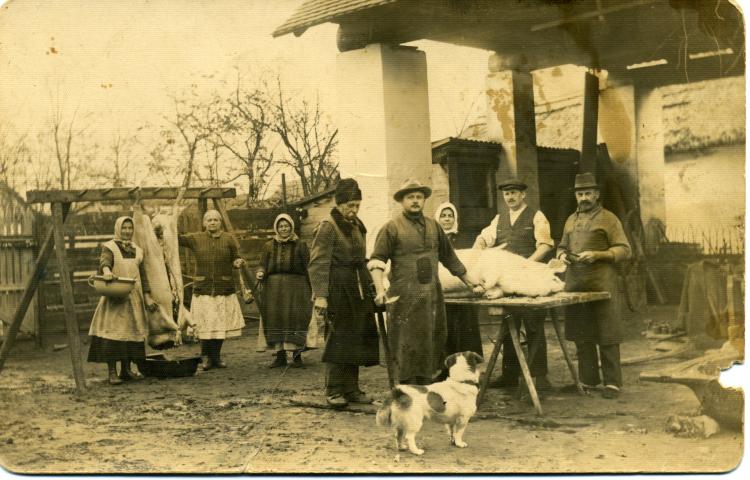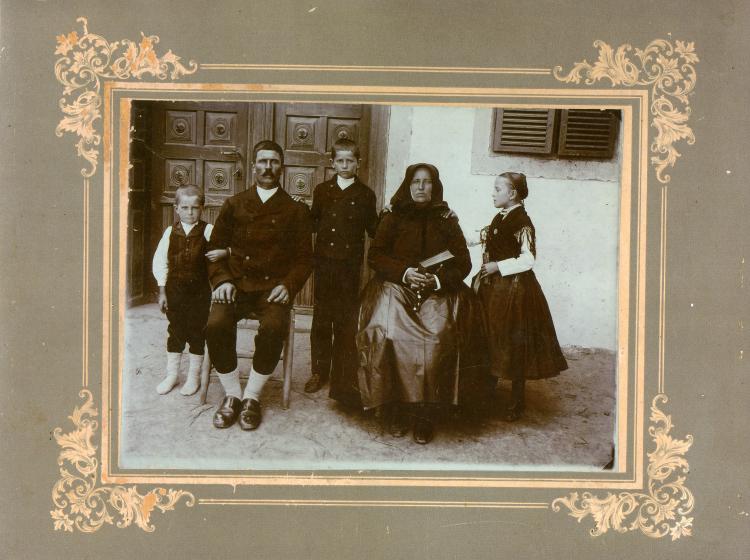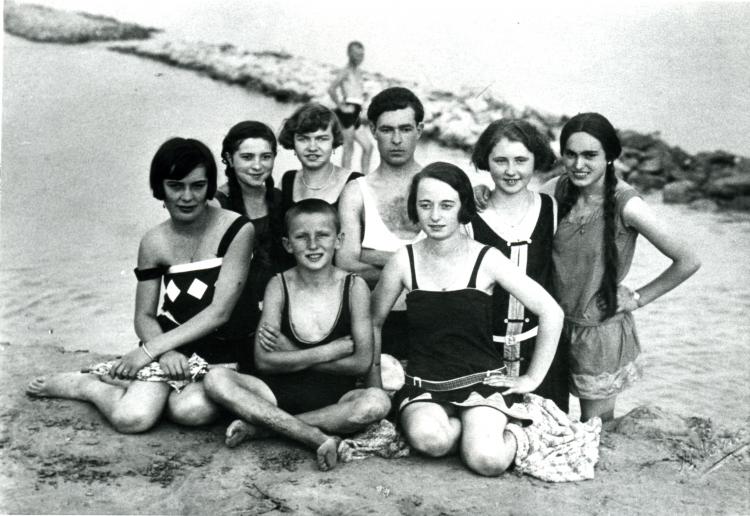The Danube Swabian Central Museum researches, digitizes and publishes over 1,000 historical photographs from its collection.
Text
The collection of the Danube Swabian Central Museum also includes extensive historical photographic material. The photographs come almost exclusively from private collections and were mostly donated to the collection. This collection of images covers a period from the 1890s to the 1970s; the temporal focus is on the 1930s and 1940s. The photographs were taken primarily in the settlement areas of the Danube Swabians in Hungary, Romania and the former Yugoslavia. In addition, there are also photographs from Germany, Austria and other countries. The photographs show a wide range of themes of everyday culture in town and country: people of all generations, agriculture, crafts, trade and industry, festivals and customs, local forms of dress, buildings and settlements. They also document decisive historical events such as the two world wars, flight, expulsion and deportation, but also provide insight into the new beginning after 1945, the organizations of the expellees, journeys to the old homeland, life under socialism, forms of remembrance and commemorative culture. The project has three goals: 1. to scientifically inventorize approximately 1,200 photographs and integrate them into the museum's browser-based database; 2. to make the image files publicly accessible on the museum's website and provide them with a search function; 3. to network this image inventory online (Deutsche Digitale Bibliothek, Museum digital, Copernico). All photographs will be digitized in high resolution for this purpose. Each image will be described according to fixed criteria, scientifically classified with the help of the available background information, and keyworded. Finally, the image file is prepared for publication on the Internet, together with some of the data collected for it, and integrated into the museum's website.

Alois and Elisabeth Obert with their children Alois, Johann and Theresia, Boschok/Palotabozsok (Swabian Turkey, Hungary), c. 1907. Donauschwäbisches Zentralmuseum, CC BY 4.0
Alois and Elisabeth Obert with their children Alois, Johann and Theresia, Boschok/Palotabozsok (Swabian Turkey, Hungary), c. 1907. Donauschwäbisches Zentralmuseum, CC BY 4.0

Rosina Pollich as godmother ("Godl") visits a woman who has recently given birth, bringing food lovingly wrapped in "Godltuch" (a "God cloth"), Weprowatz/Kruščić (Bačka, Serbia), 1937. Donauschwäbisches Zentralmuseum, CC BY 4.0
Rosina Pollich as godmother ("Godl") visits a woman who has recently given birth, bringing food lovingly wrapped in "Godltuch" (a "God cloth"), Weprowatz/Kruščić (Bačka, Serbia), 1937. Donauschwäbisches Zentralmuseum, CC BY 4.0

$de=Familie Lukatsch beim Schweineschlachten, Josefsdorf/Iosifalău (Banat, Rumänien) 1934; Lukatsch family slaughtering pigs, Josefsdorf/Iosifalău (Banat, Romania) 1934. Donauschwäbisches Zentralmuseum, CC BY 4.0
$de=Familie Lukatsch beim Schweineschlachten, Josefsdorf/Iosifalău (Banat, Rumänien) 1934; Lukatsch family slaughtering pigs, Josefsdorf/Iosifalău (Banat, Romania) 1934. Donauschwäbisches Zentralmuseum, CC BY 4.0
External Image











